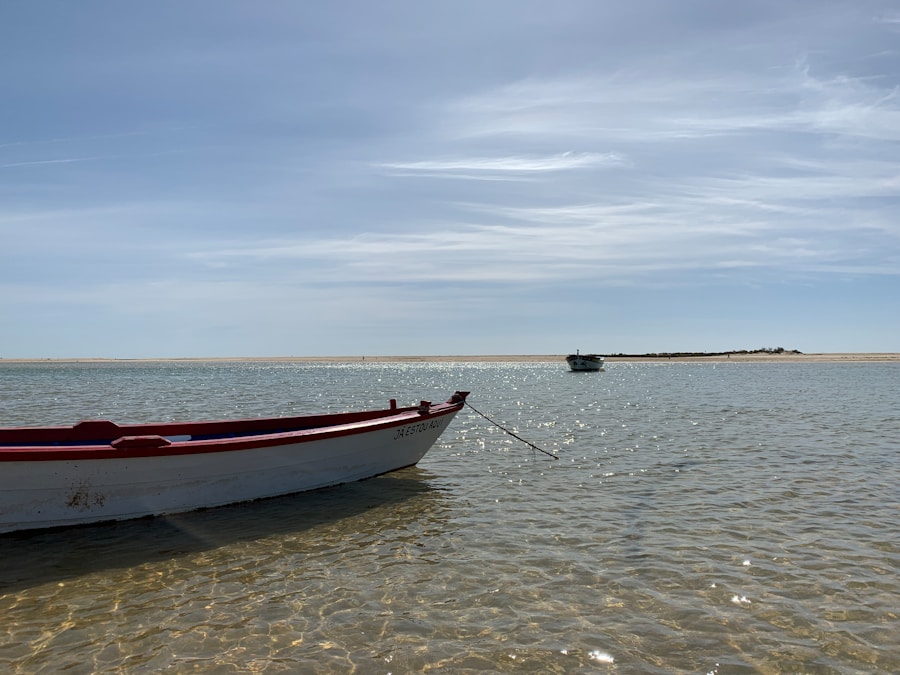Download links
How to install The Thrill of Ocean Fishing: A Guide to Landing Big Catches APK?
1. Tap the downloaded The Thrill of Ocean Fishing: A Guide to Landing Big Catches APK file.
2. Touch install.
3. Follow the steps on the screen.
Description
Ocean fishing is a complex and rewarding endeavor that requires a solid understanding of various environmental factors. Tides, currents, and weather patterns play crucial roles in determining where and when fish are likely to be found. Tides, caused by the gravitational pull of the moon and sun, create a rhythmic rise and fall of sea levels.
This phenomenon affects fish behavior significantly; many species are more active during specific tidal phases. For instance, the period just before high tide is often considered prime fishing time, as fish move into shallower waters to feed. Conversely, during low tide, fish may retreat to deeper areas, making them less accessible to anglers.
Currents are another vital aspect of ocean fishing. They can influence the distribution of nutrients in the water, which in turn affects the location of baitfish and, subsequently, larger predatory species. Understanding how to read currents can lead to more successful fishing trips.
For example, eddies and rips can concentrate fish in certain areas, creating hotspots for anglers. Additionally, weather patterns can dramatically impact fishing conditions. Overcast days may lead to increased fish activity, while bright sunny days can make fish more cautious.
Wind direction and speed also play a role; a strong onshore wind can stir up the water and make fish more active, while offshore winds may push fish away from the shore.
Key Takeaways
- Understanding tides, currents, and weather patterns is crucial for successful ocean fishing.
- Essential gear for ocean fishing includes rods, reels, lines, and tackle tailored to the target fish species.
- Strategies for targeting big game fish like marlin, tuna, and swordfish involve locating their natural habitats and using the right bait and techniques.
- Catch and release practices are important for conserving ocean fish populations and ensuring sustainable fishing for future generations.
- Safety tips for ocean fishing include being prepared for rough waters, knowing emergency protocols, and having a well-stocked first aid kit on board.
Essential Gear and Equipment for Ocean Fishing: Rods, Reels, Lines, and Tackle
Selecting the right gear is fundamental to successful ocean fishing. The choice of rod and reel is particularly important, as they must be suited to the type of fishing being pursued. For instance, if targeting larger species like tuna or marlin, anglers typically opt for heavy-duty rods that can withstand significant strain.
These rods are often made from materials like graphite or fiberglass, which provide the necessary strength without sacrificing sensitivity. Reels also vary widely; conventional reels are favored for big game fishing due to their durability and ability to handle heavy lines. Line selection is equally critical in ocean fishing.
Monofilament lines are popular for their stretch and ease of handling, but braided lines have gained favor for their strength and sensitivity. Braided lines allow anglers to feel even the slightest nibble, which can be crucial when targeting species that are known for their cautious feeding habits. Tackle choices should also be tailored to the target species; for example, using circle hooks can increase the chances of a successful catch-and-release by reducing gut hooking.
Terminal tackle such as weights, swivels, and leaders must be chosen based on the fishing environment and species being targeted.
Targeting Big Game Fish: Strategies for Finding and Hooking Marlin, Tuna, and Swordfish

When it comes to targeting big game fish like marlin, tuna, and swordfish, a strategic approach is essential. These species are not only challenging to catch but also require specific techniques to increase the likelihood of success. One effective strategy is to utilize trolling methods, where lures or bait are dragged behind a moving boat at varying speeds.
This technique mimics the movement of prey and can attract large predatory fish. Anglers often use brightly colored lures that resemble squid or small fish, as these colors can trigger aggressive strikes from marlin and tuna. Another important aspect of targeting big game fish is understanding their migratory patterns.
For instance, bluefin tuna migrate along the Atlantic coast during specific seasons, making it crucial for anglers to time their trips accordingly. Utilizing technology such as fish finders can also enhance the chances of locating these elusive species. Fish finders use sonar technology to detect underwater structures and schools of fish, providing valuable information about where to cast lines.
Additionally, keeping an eye on seabirds can be beneficial; flocks of birds diving into the water often indicate the presence of baitfish below, which in turn attracts larger predators.
Best Practices for Catch and Release: Ensuring the Conservation of Ocean Fish Populations
| Best Practices for Catch and Release | Conservation of Ocean Fish Populations |
|---|---|
| 1 | Use barbless hooks to minimize injury to fish |
| 2 | Handle fish with wet hands or gloves to protect their slime coat |
| 3 | Minimize air exposure by keeping fish in the water as much as possible |
| 4 | Use proper release techniques to ensure fish swim away strong |
| 5 | Use circle hooks to reduce deep hooking and gut hooking |
Catch and release practices have become increasingly important in ocean fishing as conservation efforts aim to protect dwindling fish populations. To ensure that released fish have the best chance of survival, anglers should follow specific guidelines. First and foremost, minimizing the time a fish spends out of water is crucial; prolonged exposure can lead to stress and mortality.
When handling fish, it’s essential to wet hands before touching them to avoid damaging their sensitive skin and slime layer.
Circle hooks are particularly effective because they tend to hook fish in the corner of the mouth rather than deeper in the throat or gut.
This reduces injury and increases the likelihood that the fish will survive after being released. Additionally, using barbless hooks can facilitate easier removal from the fish’s mouth. When releasing a fish, it’s best to do so gently; holding it upright in the water until it swims away on its own helps ensure that it has regained its strength before returning to its habitat.
Safety Tips for Ocean Fishing: Dealing with Rough Waters, Emergency Protocols, and First Aid
Safety is paramount when engaging in ocean fishing due to the unpredictable nature of marine environments. Rough waters can pose significant risks, so understanding how to navigate these conditions is essential for any angler. Wearing a life jacket is a fundamental safety measure; it provides buoyancy in case of an unexpected fall overboard or capsizing.
Additionally, being aware of weather forecasts before heading out can help avoid dangerous situations caused by sudden storms or high winds. Emergency protocols should be established before embarking on any fishing trip. This includes having a well-stocked first aid kit on board that contains items such as bandages, antiseptics, and seasickness medication.
Familiarizing oneself with basic first aid procedures can be invaluable in case of injuries or medical emergencies while at sea. Furthermore, having a communication device such as a VHF radio or satellite phone ensures that help can be summoned if needed.
The Thrill of the Chase: Stories and Experiences from Seasoned Ocean Fishermen

Conquering the Unpredictable
One such story involves an angler who spent years perfecting his technique for catching marlin off the coast of Hawaii. After countless trips with little success, he finally hooked a massive blue marlin during a particularly calm morning. The battle lasted over an hour; every time he thought he had it close enough to reel in, the marlin would make another powerful run into the depths.
Under the Stars
Another fisherman shared his experience targeting swordfish at night using specialized lights to attract baitfish. The anticipation built as he waited for a bite under the stars; when it finally came, it was exhilarating yet daunting as he fought against the powerful swordfish that leaped out of the water in an impressive display of strength.
A Bond with Nature and Fellow Enthusiasts
These stories not only capture the essence of ocean fishing but also reflect the camaraderie among anglers who share tips and techniques while bonding over their love for the sport. Through these narratives, one can appreciate that ocean fishing is not merely about catching fish; it’s about forging connections with nature and fellow enthusiasts while embracing the unpredictability that each trip brings.
If you are interested in ocean fishing, you may also enjoy reading about the latest mobile game sensation, Farlight 84. This action-packed game takes place in a futuristic world where players battle it out in a post-apocalyptic setting. Check out the article here for more information on this exciting game.
FAQs
What is ocean fishing?
Ocean fishing, also known as deep sea fishing, is the practice of catching fish and other marine species in the open ocean. It typically involves fishing in waters that are deeper than 100 feet.
What types of fish can be caught through ocean fishing?
A wide variety of fish can be caught through ocean fishing, including tuna, marlin, swordfish, mahi-mahi, snapper, grouper, and many others. The specific types of fish that can be caught depend on the location and the time of year.
What are the methods used in ocean fishing?
Ocean fishing can be done using a variety of methods, including trolling, bottom fishing, jigging, and deep dropping. Trolling involves dragging lures or bait behind a moving boat, while bottom fishing involves dropping baited hooks to the ocean floor. Jigging involves using a weighted lure that is jerked up and down in the water, and deep dropping involves fishing in deep waters using specialized equipment.
What are the popular locations for ocean fishing?
Popular locations for ocean fishing include the Gulf of Mexico, the Caribbean Sea, the Pacific Ocean, and the Atlantic Ocean. Each of these locations offers unique opportunities for catching different types of fish.
What are the regulations for ocean fishing?
Regulations for ocean fishing vary by location and can include restrictions on catch limits, size limits, and fishing seasons. It is important for ocean fishermen to familiarize themselves with the specific regulations for the area in which they plan to fish.





